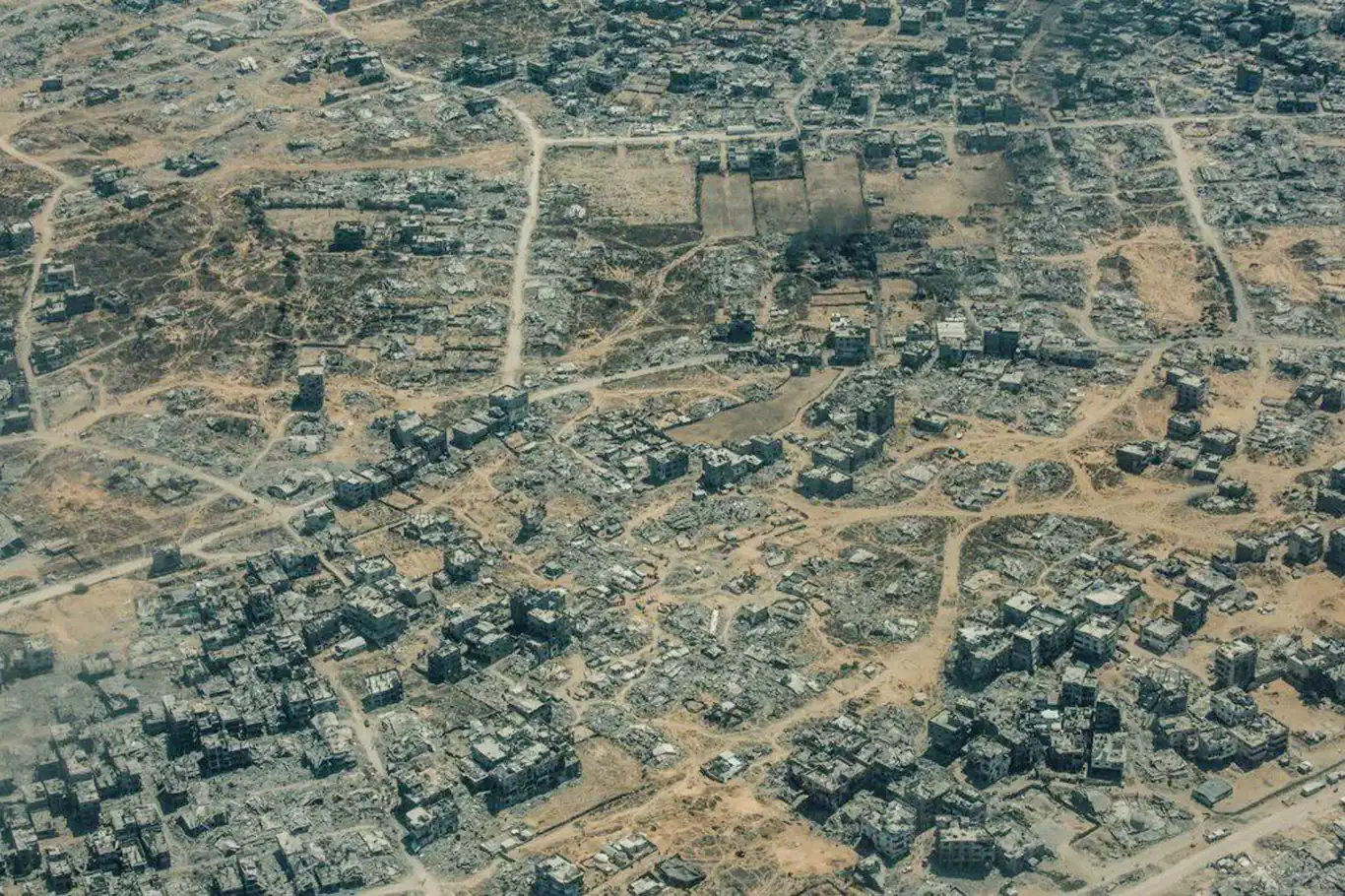Gaza in ruins: Aerial view reveals catastrophic toll of nearly two years of Israeli bombardment


Nearly two years of relentless Israeli bombardment have transformed bustling neighborhoods into a skeletal wasteland of rubble and dust, with over 61,000 Palestinians killed and countless others still buried beneath collapsed structures.
The Guardian, in a rare aerial perspective, joined a Jordanian military airdrop mission, witnessing a landscape that evokes the ruins of a civilization erased by war.
A Devastated Landscape
The flight over Nuseirat, Deir al-Balah, Khan Younis, and Rafah revealed a harrowing transformation: streets severed, roads leading to nowhere, and entire communities flattened. Once-thriving areas filled with families, schools, and markets are now reduced to debris, the result of what the United Nations has described as one of the most intense bombing campaigns in modern history. Recent estimates from the UN Office for the Coordination of Humanitarian Affairs (OCHA) indicate that over 70% of Gaza’s infrastructure, including homes, hospitals, and schools, has been destroyed or severely damaged since October 2023.
Airdrops: A Band-Aid on a Humanitarian Crisis
The Jordanian mission dropped three tonnes of aid, a critical but insufficient lifeline for a population grappling with famine and disease. Israel’s recent resumption of airdrops follows international outcry over Gaza’s worsening humanitarian crisis, yet aid officials stress that these efforts pale in comparison to what land-based deliveries could achieve. “A single day of truck convoys could deliver more than months of airdrops if the siege were lifted,” an aid official told The Guardian. OCHA reports that only 10% of Gaza’s pre-war aid levels are currently reaching the territory due to ongoing border restrictions.
Tragically, the desperation for aid has led to chaos. In Rafah, where Israeli operations intensified in early 2025, stampedes during aid distributions have caused dozens of deaths, according to local reports. The Gaza Humanitarian Foundation, backed by Israel and the US, has struggled to manage food distribution, exacerbating the crisis.
A Deepening Humanitarian Disaster
Gaza’s population, already strained by years of blockade, faces unprecedented hunger. The Integrated Food Security Phase Classification (IPC) warned in July 2025 that 90% of Gaza’s 2.1 million residents are experiencing acute food insecurity, with 20% at risk of starvation. The destruction of farmland and restrictions on imports have left markets empty, while the collapse of water and sanitation systems has fueled outbreaks of cholera and other diseases, with over 5,000 cases reported since June, per the World Health Organization.
In northern Gaza, the situation is particularly dire. Recent Israeli strikes in July 2025 targeted civilian infrastructure, including a water treatment plant in Jabalia, leaving 300,000 people without access to clean water. The March 23 attack on a Palestinian emergency convoy, which killed 15 medics and rescue workers, remains a grim symbol of the dangers faced by those attempting to provide aid.
Voices from the Ground
On the ground, Palestinian journalist Malak A. Tantesh, one of the few reporters still documenting Gaza’s reality, continues her work despite being displaced alongside 1.9 million others, according to UN figures. Cut off from the outside world and enduring hunger and exhaustion, her reports echo the aerial view: a territory reduced to ruins, where hope struggles to survive amid relentless bombardment.
A Global Call to Action
The images from above paint a stark picture of a modern society systematically dismantled. Gaza’s destruction, driven by war and sustained by siege, stands as a testament to human endurance and a challenge to the international community. Despite repeated UN resolutions calling for a ceasefire and unimpeded humanitarian access, the conflict shows no signs of abating. As of August 2025, diplomatic efforts remain stalled, with Israel maintaining its military operations and Hamas continuing rocket attacks, albeit at a reduced scale due to resource depletion.
Gaza’s plight remains a humanitarian and moral crisis, a civilization’s collapse unfolding before the world’s eyes, with no resolution in sight. (ILKHA)
LEGAL WARNING: All rights of the published news, photos and videos are reserved by İlke Haber Ajansı Basın Yayın San. Trade A.Ş. Under no circumstances can all or part of the news, photos and videos be used without a written contract or subscription.
Karol Nawrocki, Poland’s newly elected right-wing president aligned with the opposition Law and Justice (PiS) party, was officially sworn into office on Wednesday during a ceremony in parliament.
The death toll from Israel’s ongoing genocidal war on the Gaza Strip has risen to 61,158, the majority of whom are women and children, since the start of the aggression on October 7, 2023, according to medical sources in the enclave on Wednesday.
Medical sources in the Gaza Strip reported on Wednesday that five more Palestinians have died in the past 24 hours from acute malnutrition and starvation, as Israel’s blockade continues to strangle the territory’s access to food and medicine.
Armenian Prime Minister Nikol Pashinyan and Azerbaijani President Ilham Aliyev are set to meet US President Donald Trump in Washington this week for high-level talks aimed at fostering peace and economic cooperation in the South Caucasus, the Armenian government has confirmed.